Moderate overlap front: original test
Rating applies to 2001-07 models
Tested vehicle: 2001 Mercedes-Benz C 320 4-door
The Mercedes C class was redesigned for the 2001 model year.
| Evaluation criteria | Rating |
|---|---|
| Overall evaluation | |
| Structure and safety cage | |
| Driver injury measures | |
| Head/neck | |
| Chest | |
| Leg/foot, left | |
| Leg/foot, right | |
| Driver restraints and dummy kinematics | |
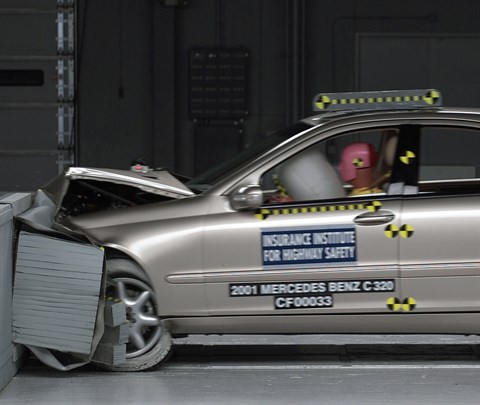
Action shot taken during the frontal offset crash test.
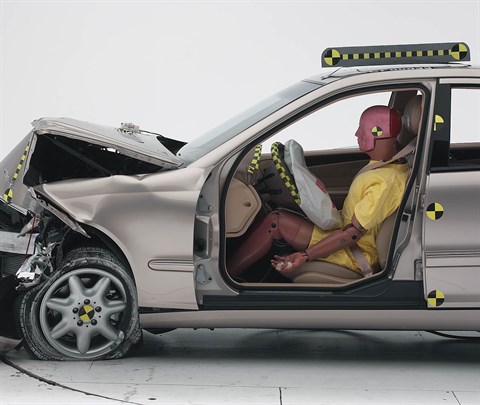
The dummy's position in relation to the steering wheel and instrument panel after the crash test indicates that the driver's survival space was maintained very well.
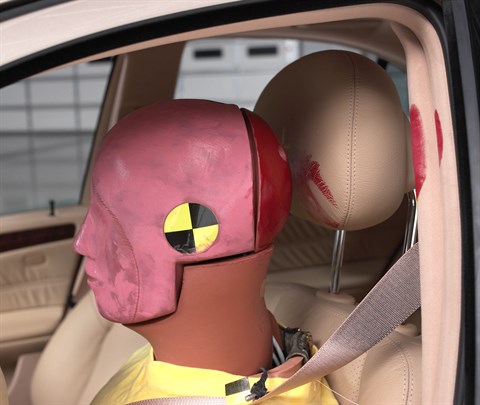
Smeared greasepaint indicates where the dummy's head hit the B-pillar and head restraint during rebound. Head accelerations from these hits were low.
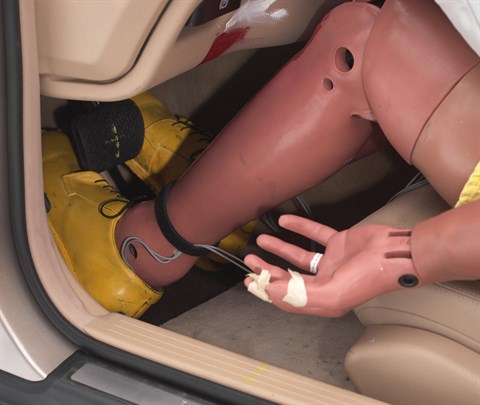
There was little change in the position of the dummy's feet following the crash test. Footwell intrusion was minimal, and injury risk was low.
Side: original test
Rating applies to 2006-07 models
Tested vehicle: 2005 Mercedes-Benz C 240 4-door with standard front and rear head curtain airbags and standard front and rear door-mounted torso airbags
The Mercedes C class was redesigned for the 2001 model year. Modifications were made to the front seats and side airbags beginning with 2005 models to improve occupant protection in side-impact crashes. Beginning with 2006 models, the side airbags designed to protect rear passengers' torsos became optional (standard in 2005 models).
| Evaluation criteria | Rating |
|---|---|
| Overall evaluation | |
| Structure and safety cage | |
| Driver injury measures | |
| Head/neck | |
| Torso | |
| Pelvis/leg | |
| Driver head protection | |
| Rear passenger injury measures | |
| Head/neck | |
| Torso | |
| Pelvis/leg | |
| Rear passenger head protection | |
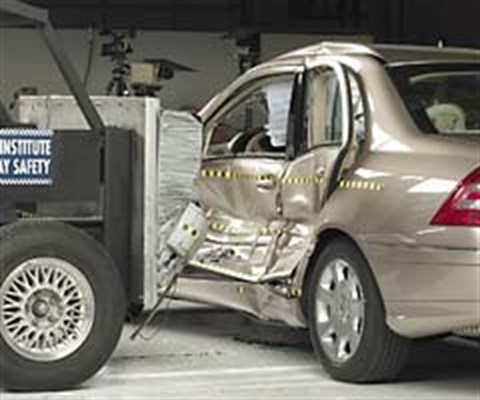
View of the vehicle and barrier just after the crash test.
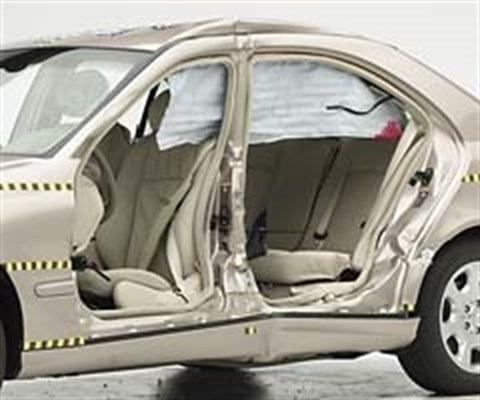
View of the vehicle after the crash with doors removed, showing the side curtain airbag and damage to the occupant compartment.
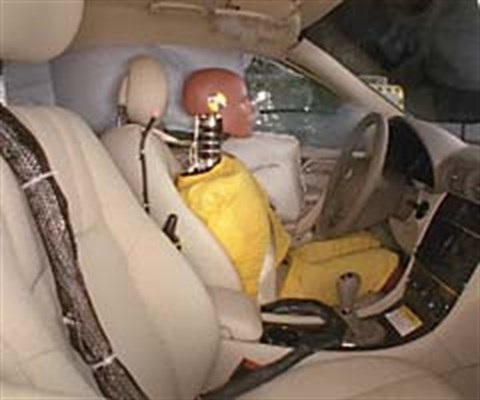
Action shot taken during the side impact crash test showing the driver dummy's head was protected from being hit by hard structures by the side airbags.
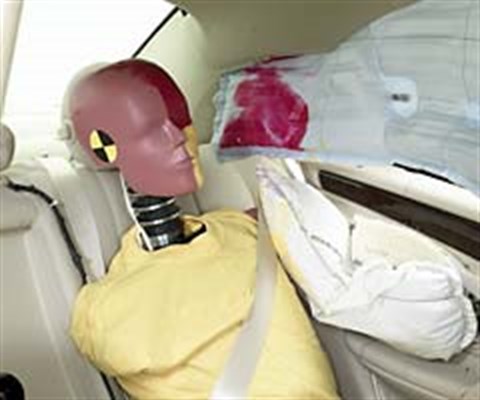
Smeared greasepaint shows where the rear passenger dummy's head was protected by the side curtain airbag. Also shown is the door-mounted torso airbag, standard on the tested 2005 model, but optional beginning in 2006.
Head restraints & seats
Seat type: Seats with auto-adjust head restraints AHR
| Overall evaluation | |
|---|---|
| Dynamic rating | |
| Seat/head restraint geometry |
About the head restraint & seat test
Currently, IIHS tests apply only to front seats.
